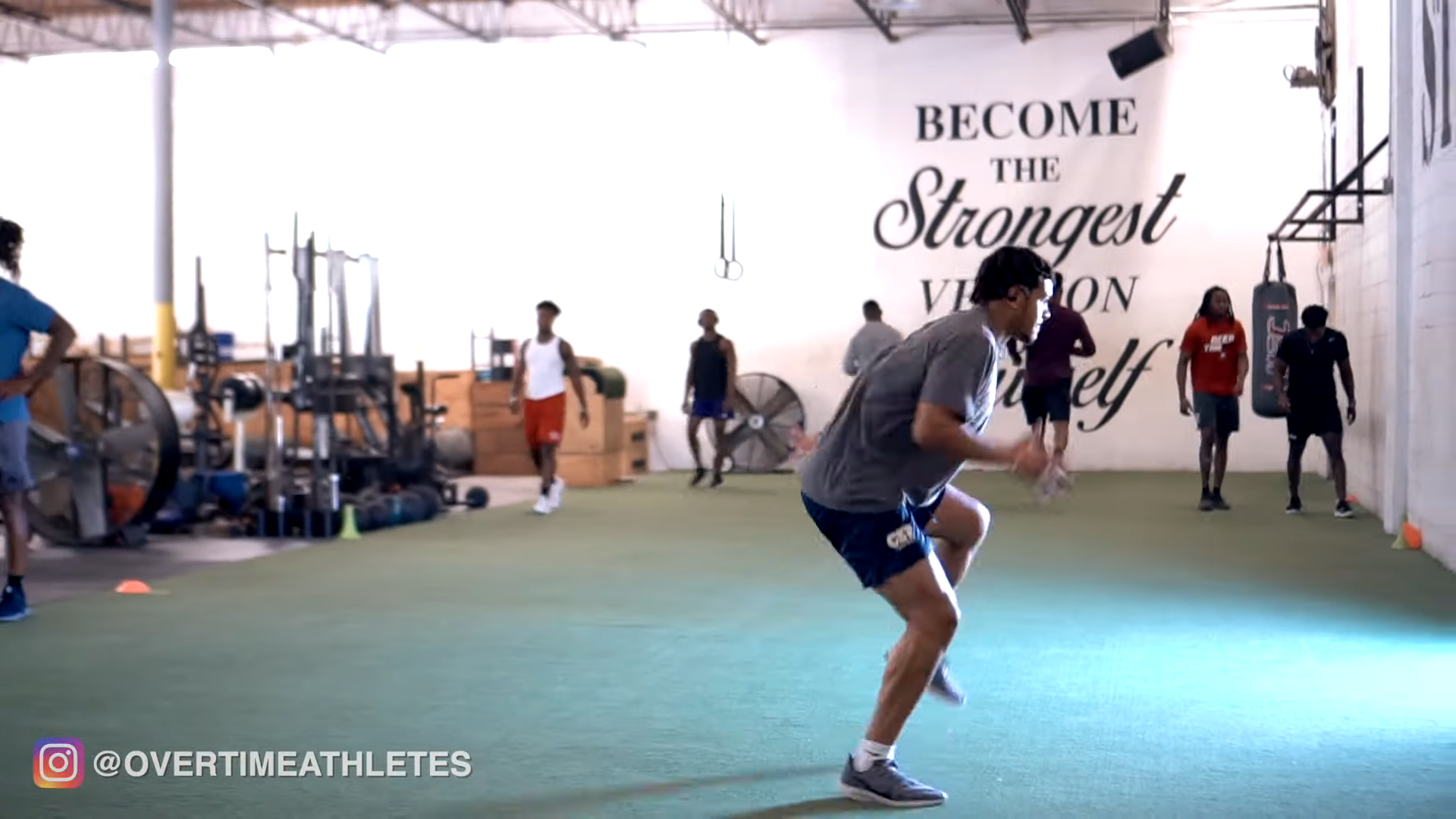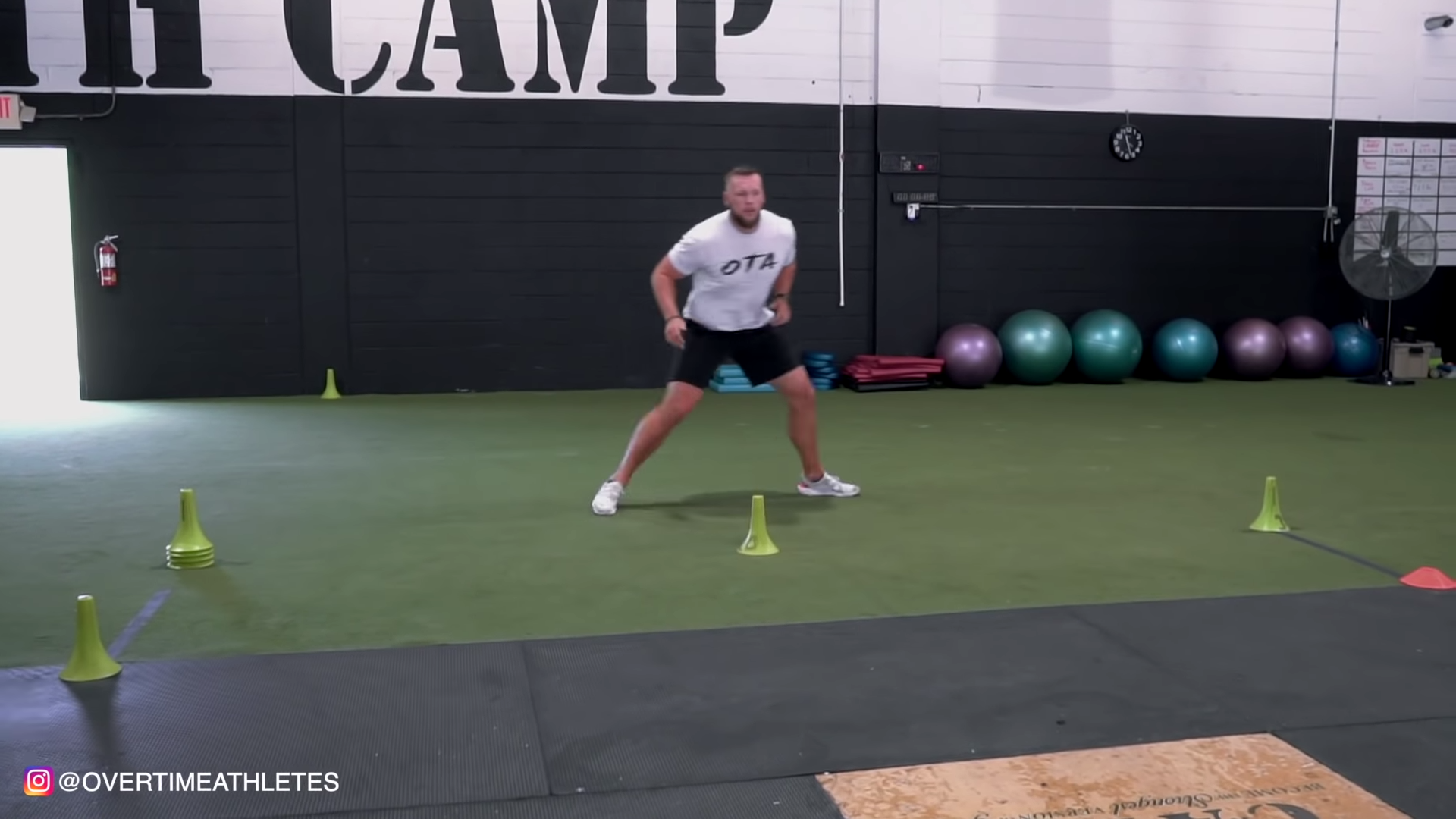Top 5 Best Change Of Direction Drills for Athletes
Whether you’re a running back who wants to juke better, or a basketball player who wants to put the clamps on the comp, change of direction is a key role in athletic success. But, I want to set the record straight on which change of direction drills are best for athletes.
What are the best change of direction drills for athletes?
Drills that are simple, and replicate the foundational movements of sport. If you can master these, then you will see a big carryover from your training to sport.
The Top 5 Best Change of Direction Drills for Athletes Are:
- Lateral Line Hops
- The Lateral Shuffle Shuttle
- Lateral Broad Jump
- Lateral Cone Hops
- Single Leg Broad to 90 Degree Jump
Let’s get into the sauce behind these change of direction drills and how to perform them:
1. Lateral Line Hops
One of the most important abilities you should when it comes to change of direction is inversion and eversion of the ankle. These two functions will play into your ability to push off the ground laterally and absorb force while minimizing your risk for injury.
Lateral line hops are a great drill to enhance inversion/eversion of the foot, and it’s easy to progress. Once you master double leg line hops, you can progress to single leg. You can also make the jumping distance wider or higher depending on your ability level.
The rest of the change of direction movements I’m going to share will also be versatile and easy to progress.
Here’s How to Perform Lateral Line Hops:
- Find a line
- Start with both feet on one side of the line, knees slightly bent, center of gravity over the line
- Start the clock and hop over the line without moving forward or backward
- Try and keep the jump distances uniform
- Get as many jumps as possible in the allotted time
- Progress to single leg or higher jump as you master this movement
2. Lateral Shuffle Shuttle
Another critical ability when it comes to change of direction is abduction and adduction of the hip. Again, this plays a role in your ability to powerfully push off the ground laterally and safely absorb force. The lateral shuffle shuttle is a great movement to develop this ability while also developing good footwork.
You can easily progress this movement by adding a reactive component.
Here’s How to Perform the Lateral Shuffle Shuttle:
- Set three cones in a line 2.5 yards apart from each other
- Get into an athletic stance straddling the middle cone extended
- Push off your rear leg towards one of the cones
- Chop your feet as you approach the cone and change directions
- Push off your rear leg hard towards the far cone
- Decelerate and chop your feet as you approach
- Finish through the middle cone
[optin-monster-shortcode id=”cwwswiedzdpbtspo8s6l”]
3. Lateral Broad Jump
The lateral broad jump is one of my go-to foundational movements for change of direction. This movement has the athlete push off of his back leg laterally, get airborne, rotate in the air, and land facing front on two feet. It incorporates lateral power, body control, and force absorption all in one.
As you get better at this movement, you can add a reactive component. You’ll see an example of this lateral in this list.
Here’s How to Perform the Lateral Broad Jump

- Face a position perpendicular to where you want to land
- Load up your rear leg
- Push the hip back and bend the knee slightly
- Bring your front leg behind your rear leg
- Swing that leg out to get airborne
- While in the air rotate the body so you’re facing forward
- Land softly on two feet
4. Lateral Cone Hops
Lateral cone hops are another movement that develop inversion/eversion of the ankle. This movement also works to shorten the amortization phase, or ground contact time needed to progress into another jump. There’s also an element of body control due to the addition of the cones.
This drill is a great progression for lateral line hops as the body control and ground contact elements raise the difficulty.
Here’s How To Perform Lateral Cone Hops:
- Set up four cones about 12 inches apart from each other in a straight line
- Start at one end of the cones with the knee slightly bent and hips back
- Jump laterally and hit each cone. Land with the big toe in line with the top of each cone
- Once you reach the end of the cones, pause for one second, then jump back to the original cone
- Repeat this twice on each leg, then switch sides
- You can make this movement more difficult by increasing the distance between cones or eliminating the pause at the end of the cones
5. Single Leg Broad to 90
This is a more advanced change of direction drill, but one that puts everything from the previous drills together. The single leg broad to 90 is a reactive jump that requires the athlete to rapidly change directions. This movement builds lateral power and works the amortization phase to shorten your ground contact time.
Here’s How to Perform Single Leg Broad to 90s:
- Set up four cones in a T shape
- Start at the cone that makes the bottom of the T
- Perform a single leg broad jump to the top middle cone
- Once you make contact with the ground at the top middle cone, push out laterally to land at one of the far cones
- Land on two feet
- Perform this on both legs on both sides of the cones
Change of Direction Drills Suck
If I’m being honest…
Change of direction drills SUCK on their own.
You need progressions of drills if you really want to juke defenders out of their shoes, become a lockdown defender, or become an overall more lethal athlete in your sport.
And that’s why I created GAME SPEED.
It contains the progressions for everything agility – from agility drills to lifting to plyometrics and more.
Better:
You can get GAME SPEED for a special blog reader discount.
Just hit the link below and your discount will be automatically applied;
